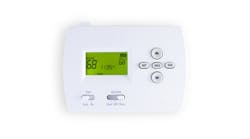Like most infrastructure-intensive industries, the utility industry is not unique in facing the challenge of managing its aging infrastructure in an environment that is increasingly complex and interdependent. With an increasing premium on power quality and reliability, deterioration of the grid infrastructure is not an option. The growing need for maintaining and replacing aging grid assets combined with ongoing efforts to deploy smart grid technologies are shifting the paradigm to accentuate the importance of prudent and timely asset management practices.
Although traditional asset management practices were able to reduce the number of high-risk assets, mainly by focusing on entire populations of a prone-to-failure asset type, this approach is not a viable solution to address the growing customer expectations for power quality and reliability. A major reform in asset management practices by leveraging many benefits offered by energy infrastructure modernization, namely the increased network monitoring, flexibility and visibility, seems more pertinent and viable than ever.
Observing the need for viable asset management programs, we revisited ComEd’s asset management in 2007 by introducing health indices and soon after that risk scores. Unlike traditional asset management practice, health indices allow assessing the condition of individual assets for all transmission and substation equipment. Risk scores enable the prioritization and optimization of asset management and asset replacement programs across our service area, and provide quantifiable means to measure the risks associated with proposed asset management and replacement projects. We assess each project in terms of mitigated reliability, safety and environmental risks, taking into account the likelihood of these events occurring and the scale of the associated impacts.
While this approach has worked well for critical, high-value assets, it has been more difficult to apply to a large number of distribution assets because of the large number and limited availability of granular monitoring data; however, this is changing. Enabled by the Illinois Energy Infrastructure Modernization Act of 2011, ComEd is undergoing wide-scale deployment of smart grid devices for increased grid monitoring. The deployment of smart meters has enabled us to gain observability of our system at a customer premises level. This data provides us with a detailed understanding of how the system and embedded assets are performing. Moreover, having approximately 4 million smart meters will be comparable to having 4 million microprocessors distributed throughout our network. While today’s smart meter data management practices typically involve large databases for data collection throughout the network, in the future, smart meters themselves could be leveraged as distributed processing resources that would generally only notify central databases when anomalies occur or pending equipment failures are detected.
The grid of the future calls for an analytics-based realtime asset strategy that relies on data from the implemented smart grid infrastructure. This data will provide a platform for prioritization for programs like Grid Resiliency Portfolio, a six-year program ComEd launched in 2014 for increased grid resiliency. The future prioritization framework will be based on multifaceted analytical approaches that reflect static data and leverage real-time data available as a result of the smart grid. However, the significant value of these analytic platforms is in the capability for real-time tracking of asset health and proactive identification of issues that may impact system performance. These capabilities will enable the development of predictive failure alarms, much like the warning systems available in modern cars.
Although smart meters and associated analytics provide an insight for asset management purposes, phasor measurement units (PMUs), which measure system performance with a cycle-by-cycle resolution, will further improve visibility to our transmission and distribution equipment. Although, we have so far deployed these devices primarily on our transmission system, there are many applications for distribution systems.
The high-resolution data from PMUs support analytics such as condition-based monitoring, applying dynamic ratings to distribution assets, and predictive analytics on equipment failures. Wide-scale deployment of these technologies will support the development of new analytics to build a framework for the future of asset management across the utility industry. Considering all these changes, the future of asset management will move away from time-based “broad brush” and, at times, reactive practices of the past and, instead, use the information made available through these advanced monitoring capabilities to proactively address issues based on asset performance and condition, and take a risk-based approach to optimize investment. To encourage this transition, it is important that utilities invest in building their systems and asset monitoring capabilities, and also in data analytics and “smarts” that turn this data into usable and invaluable information to inform these proactive decision-making process


